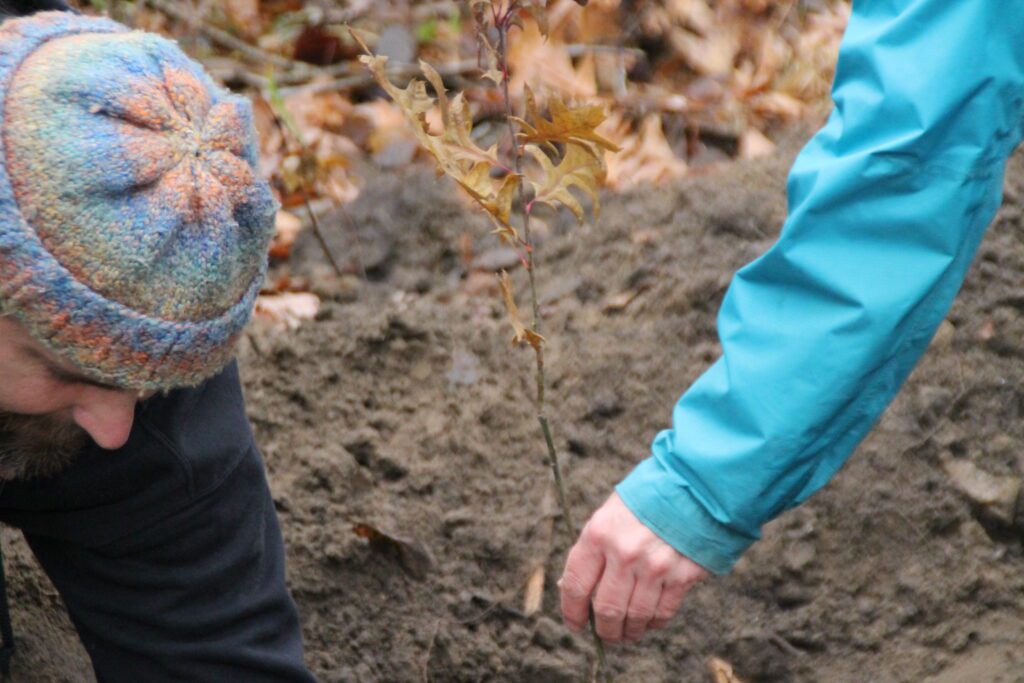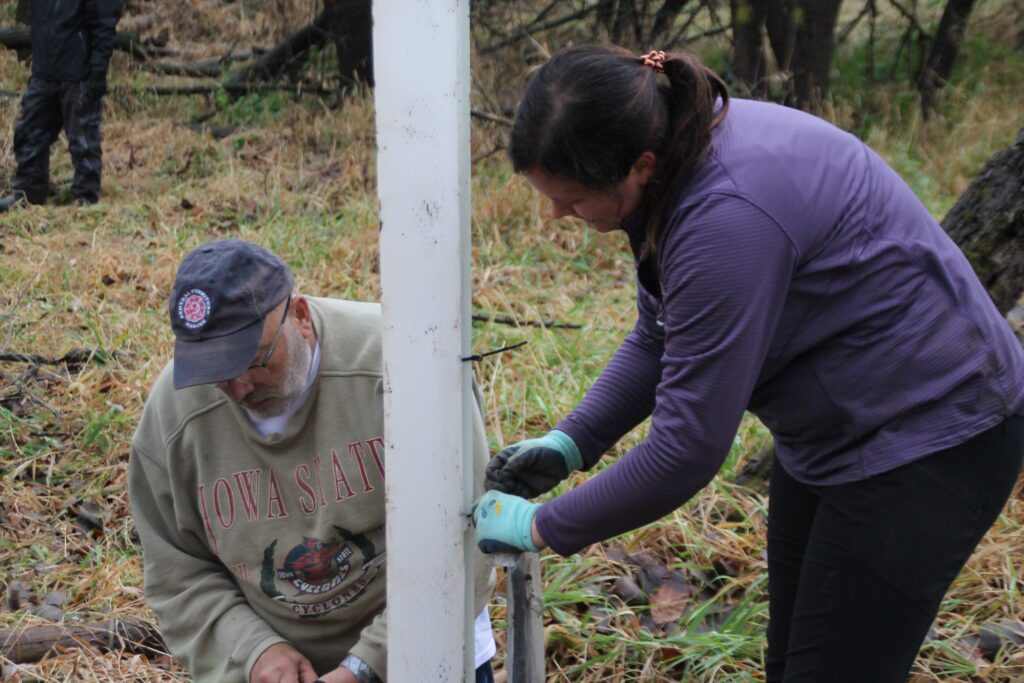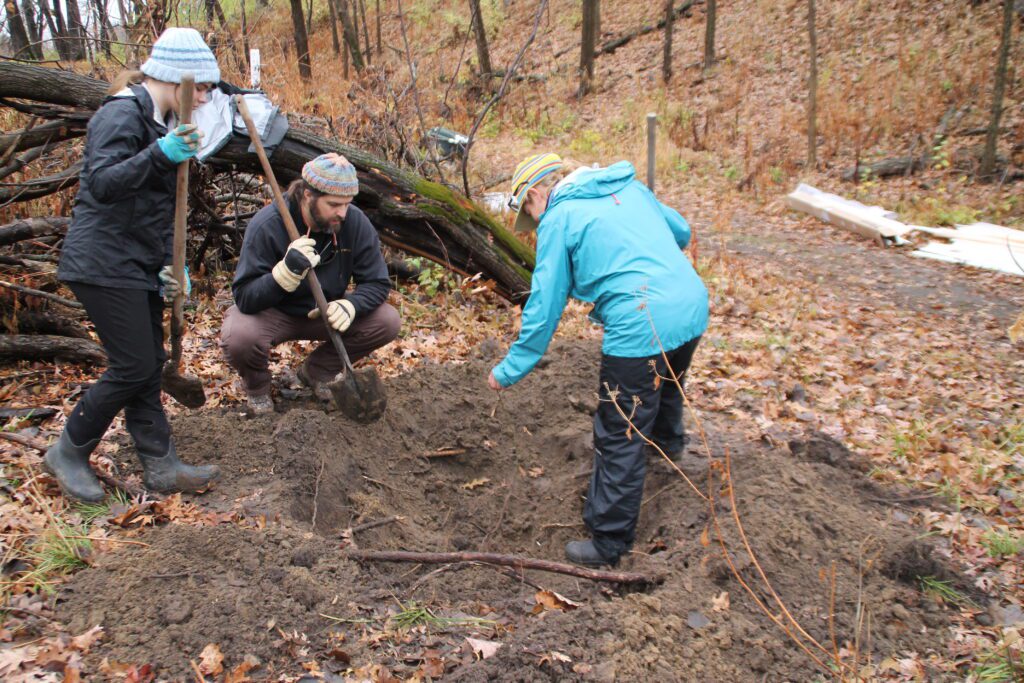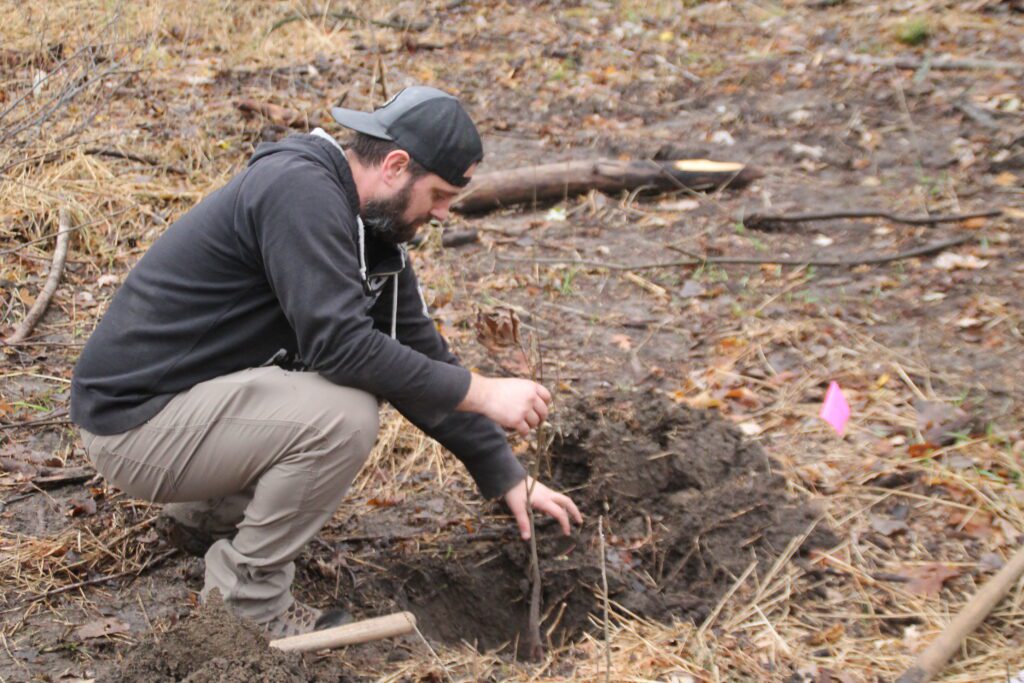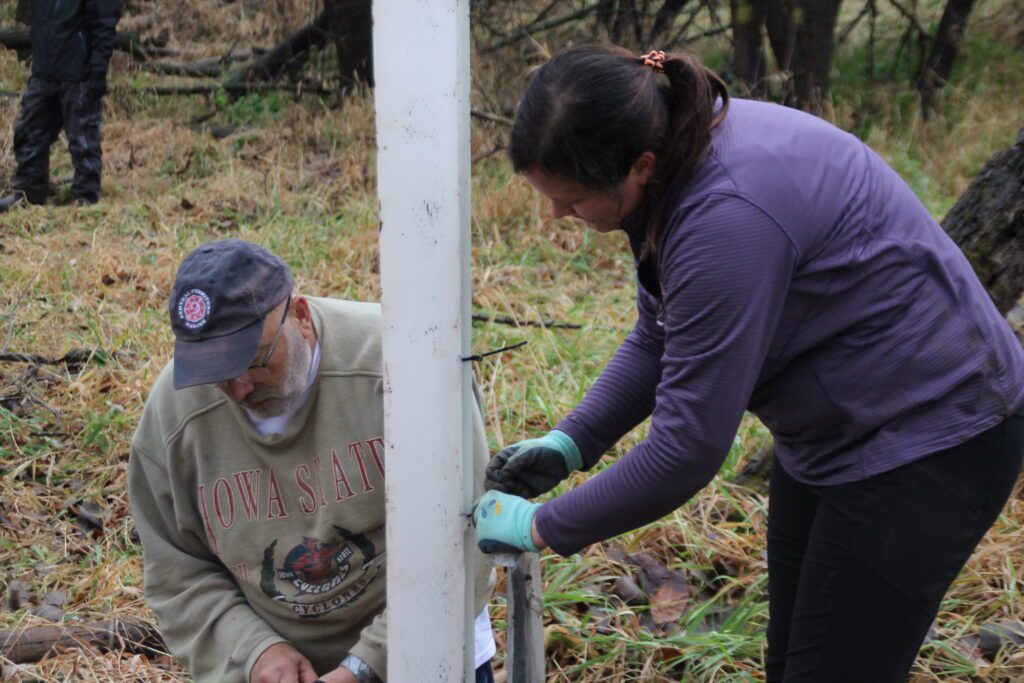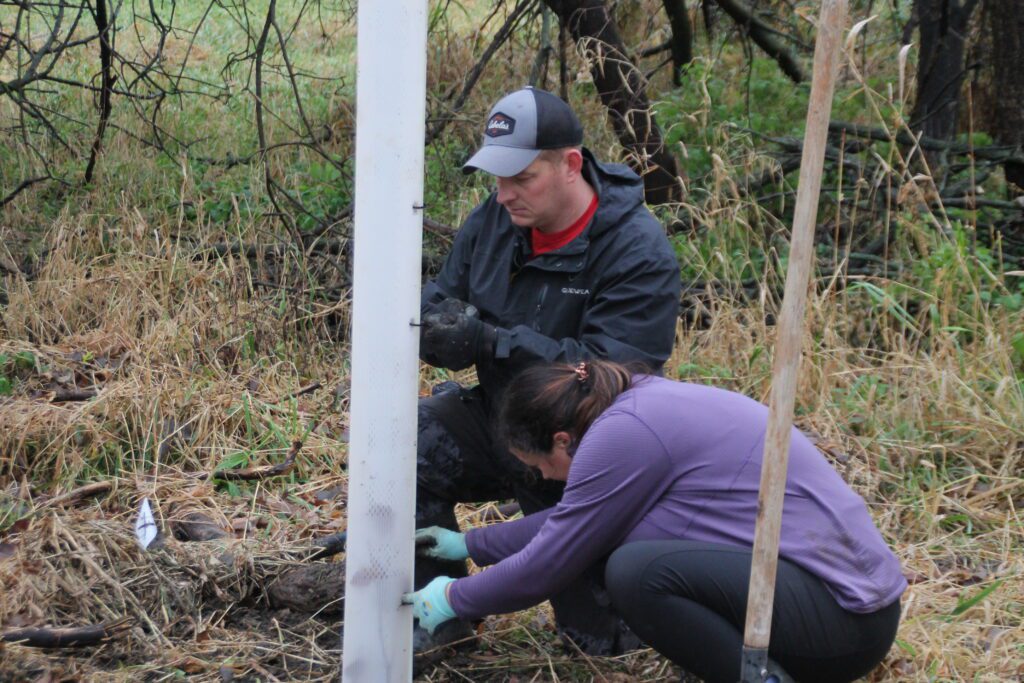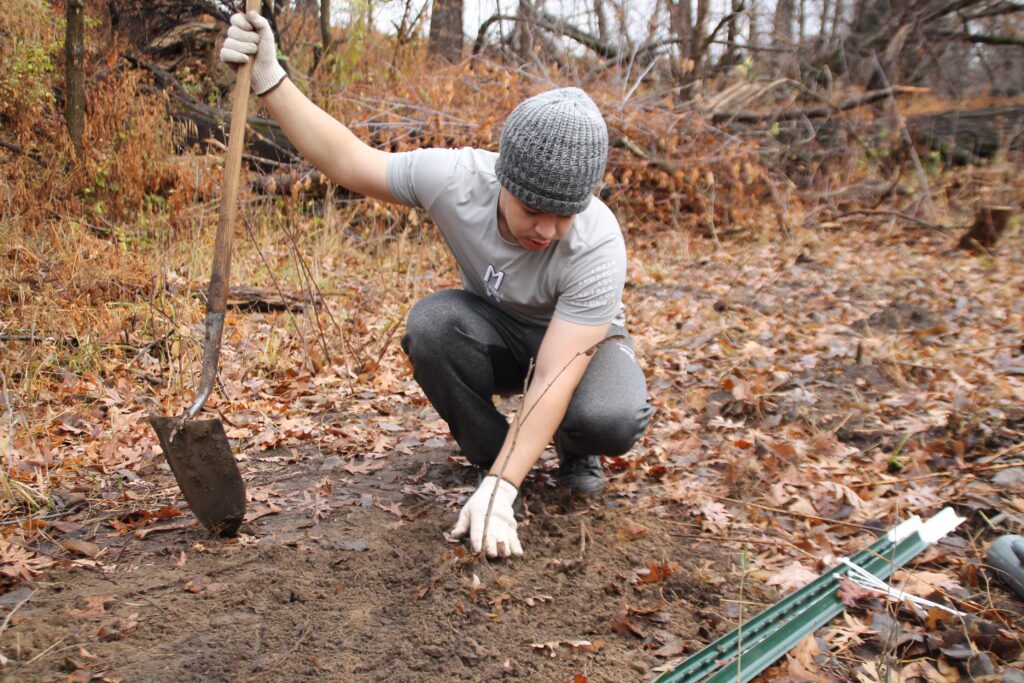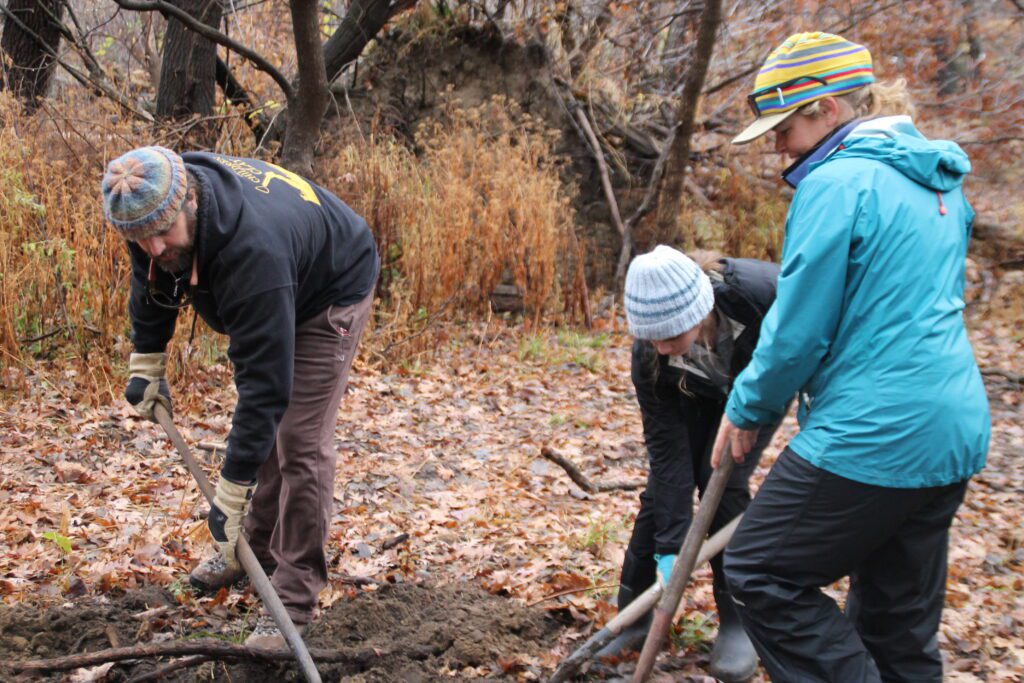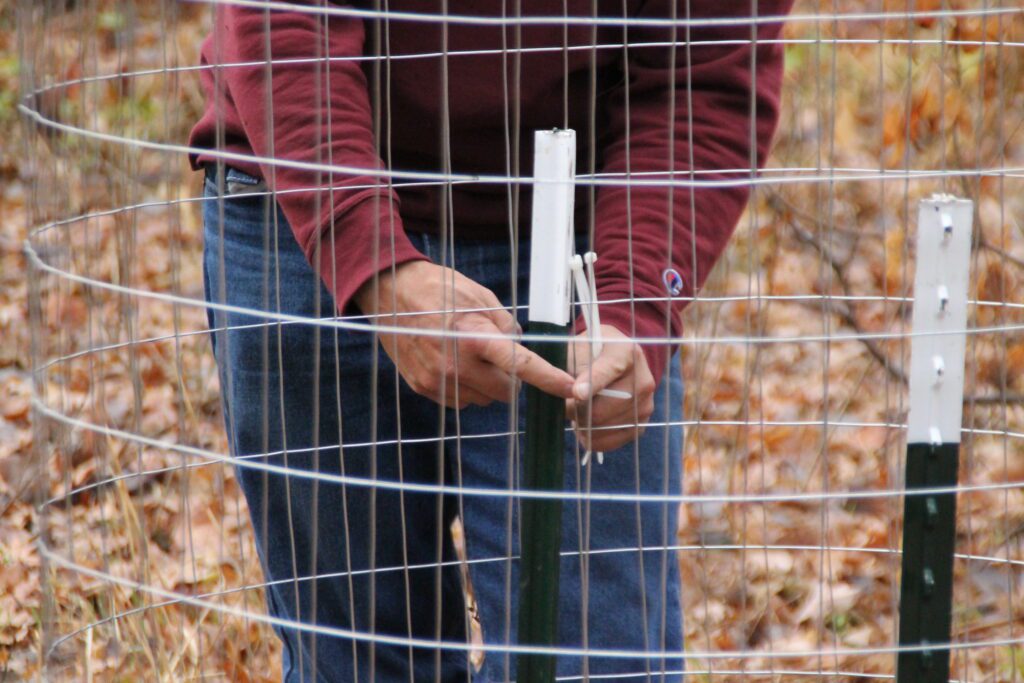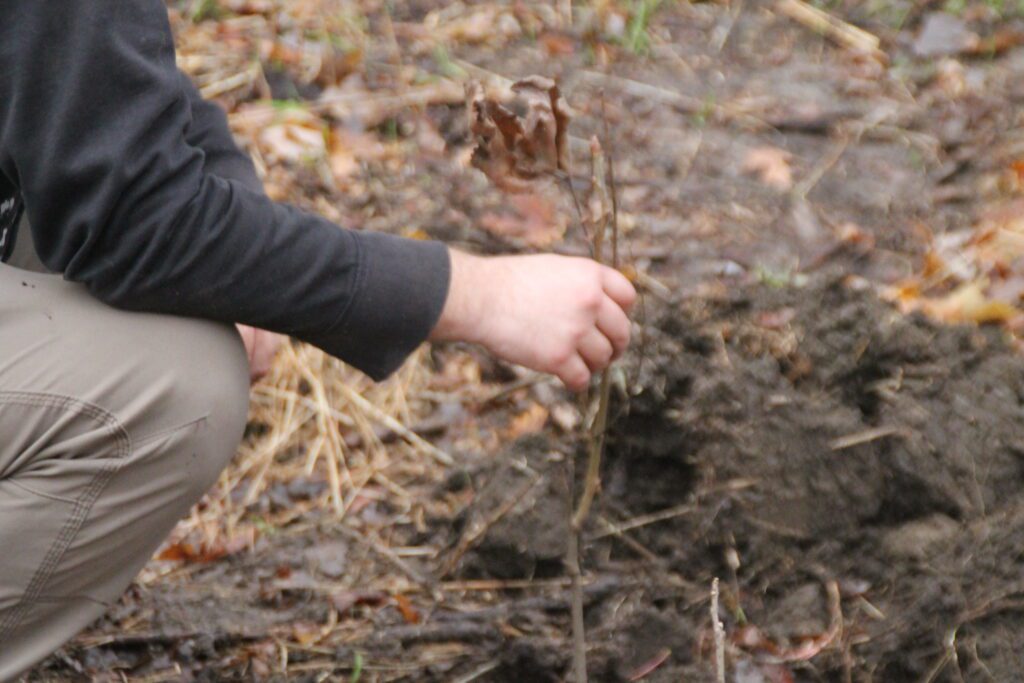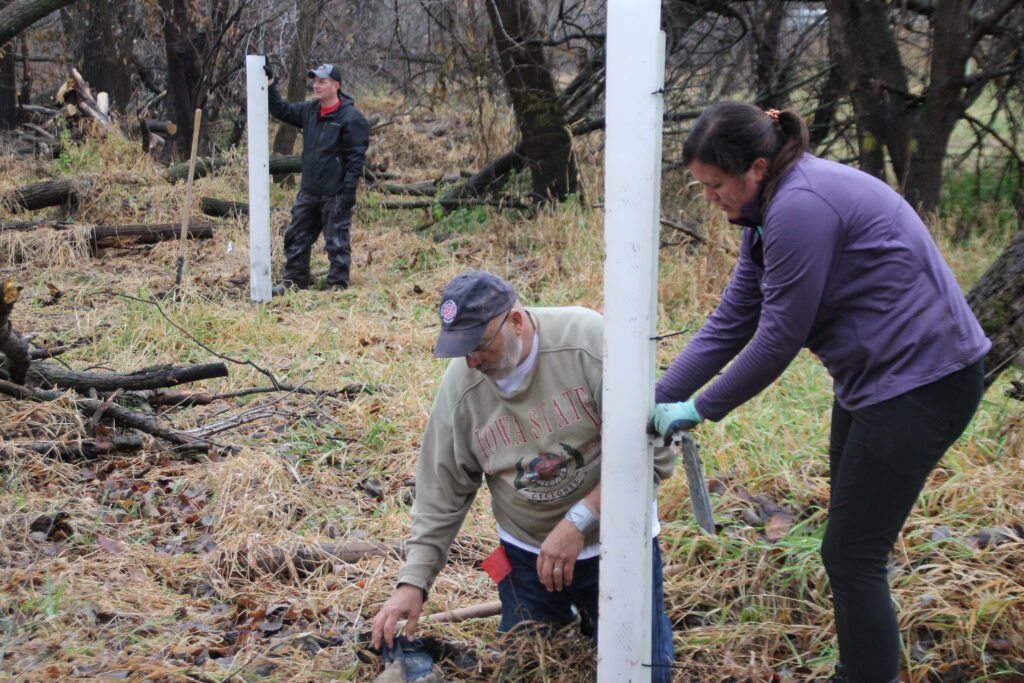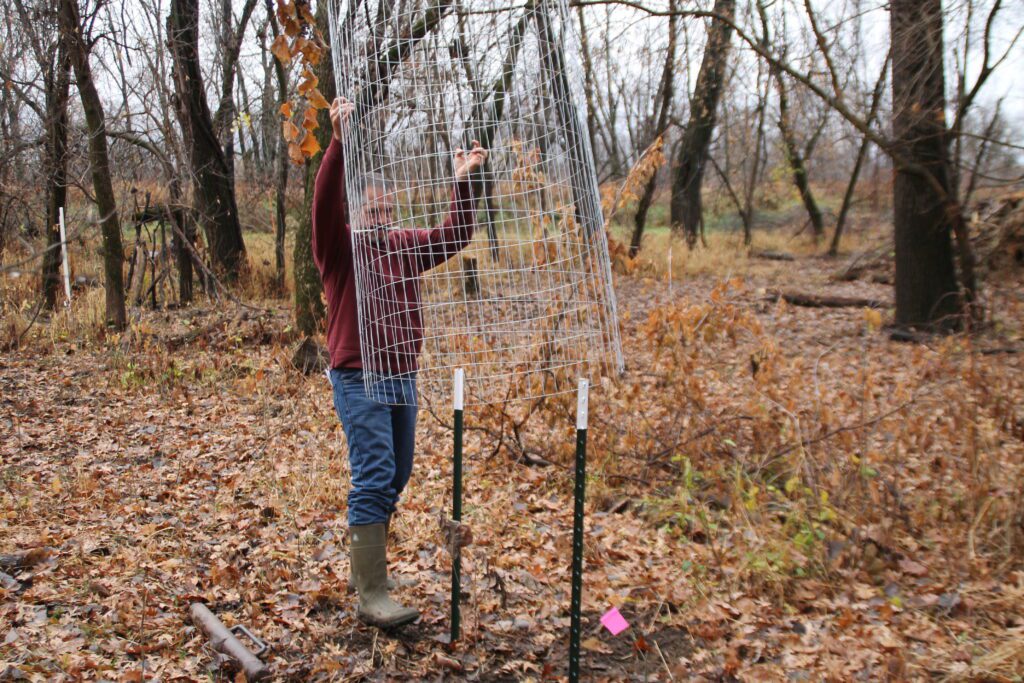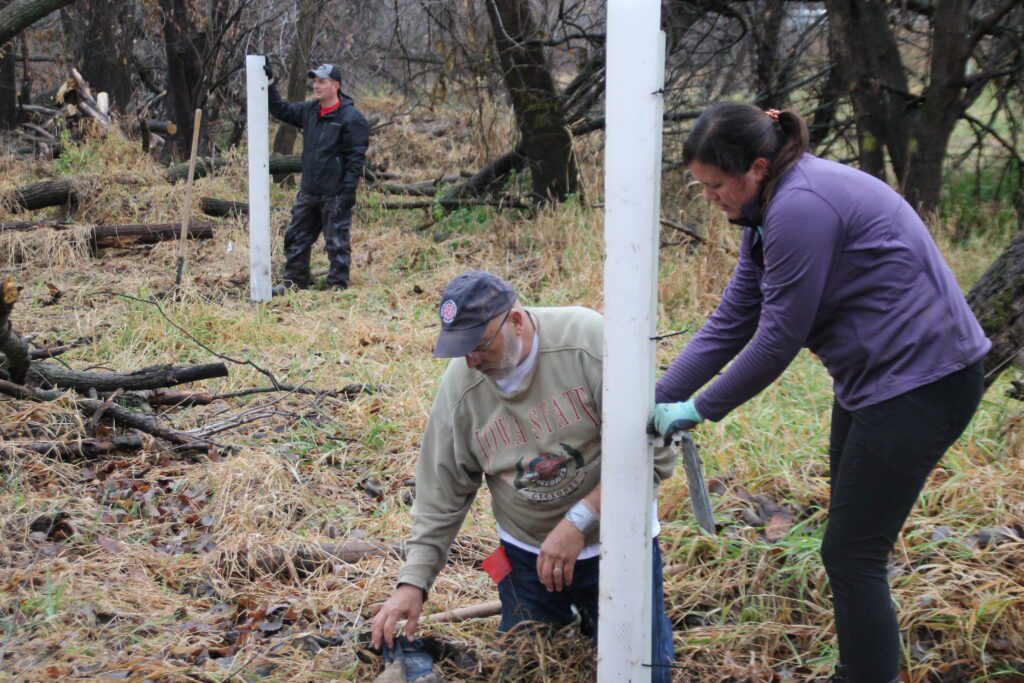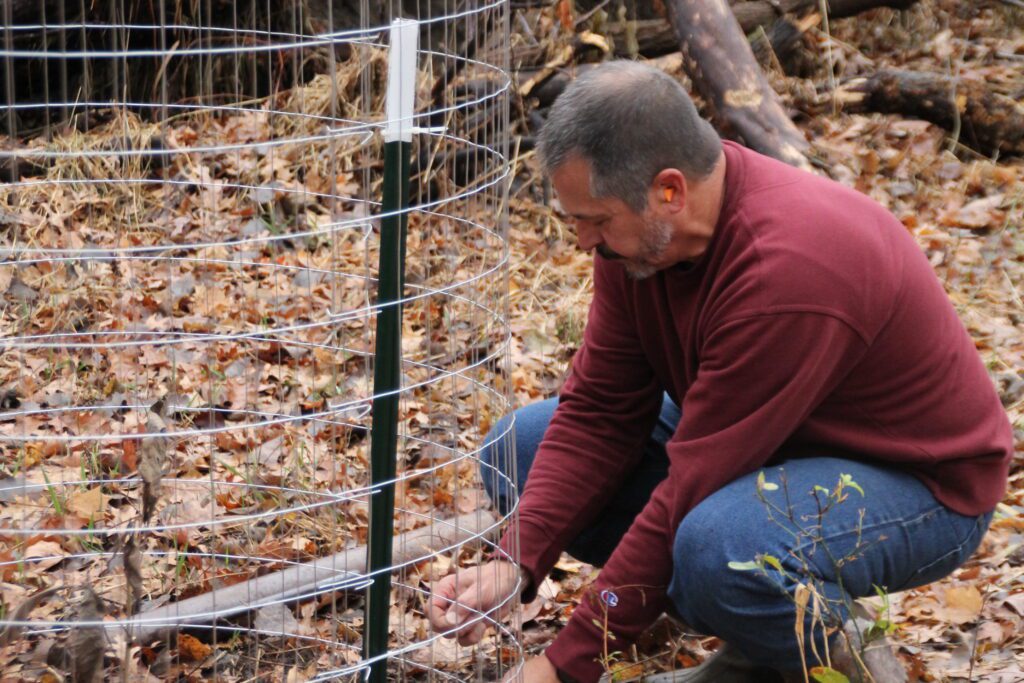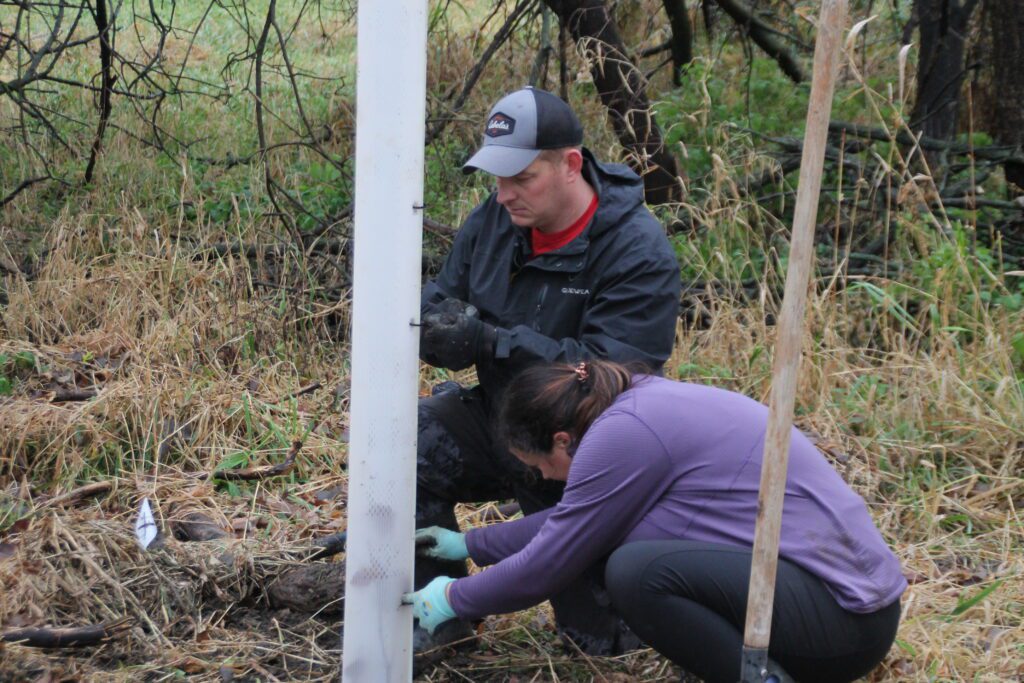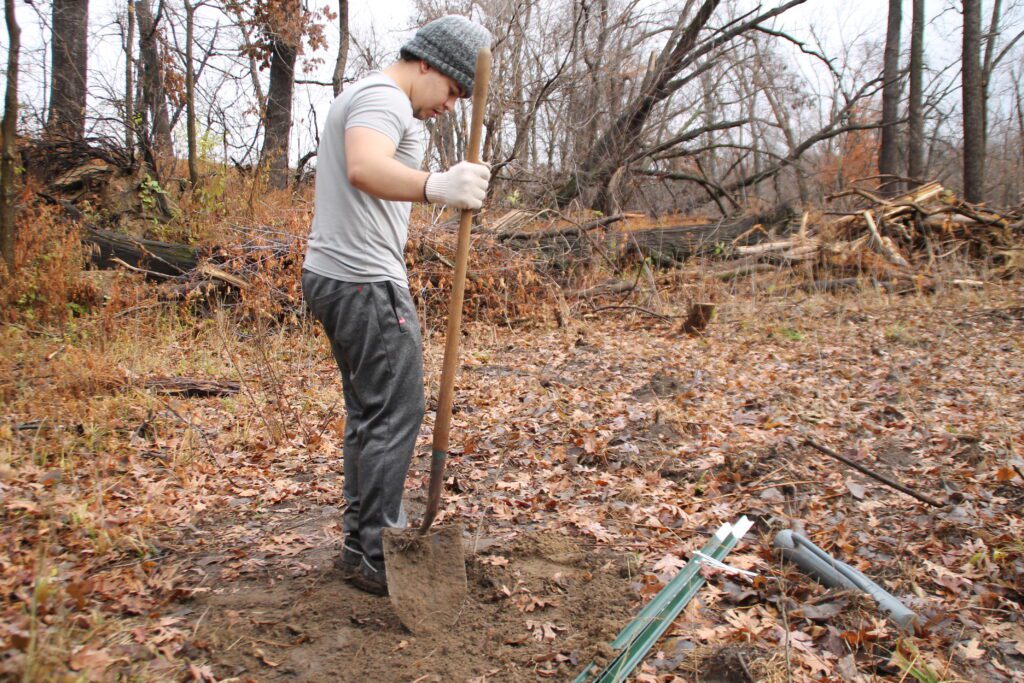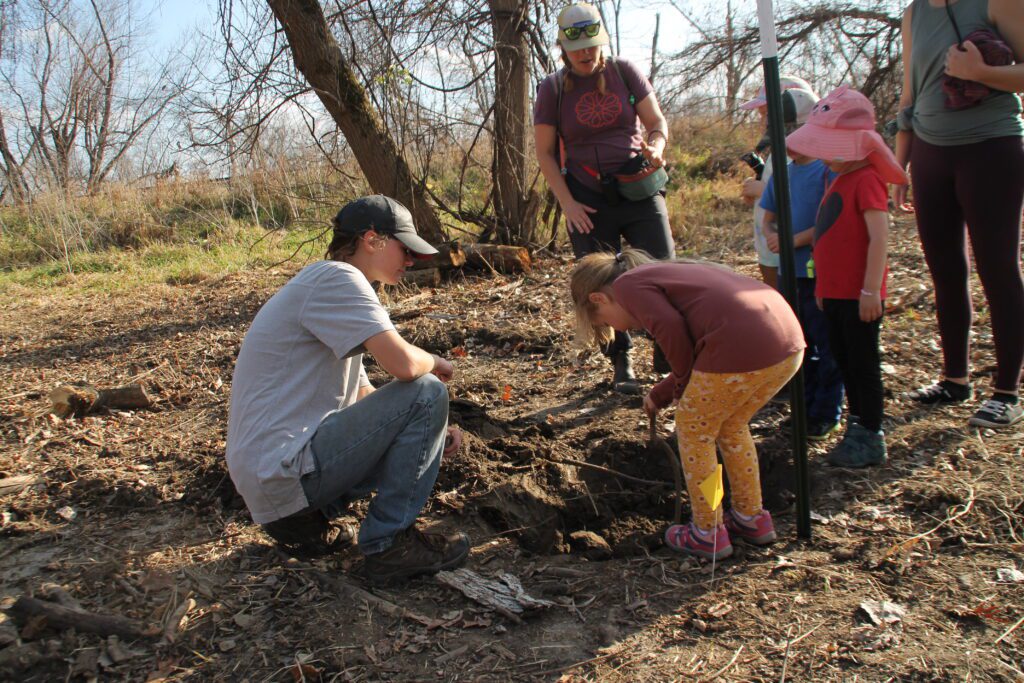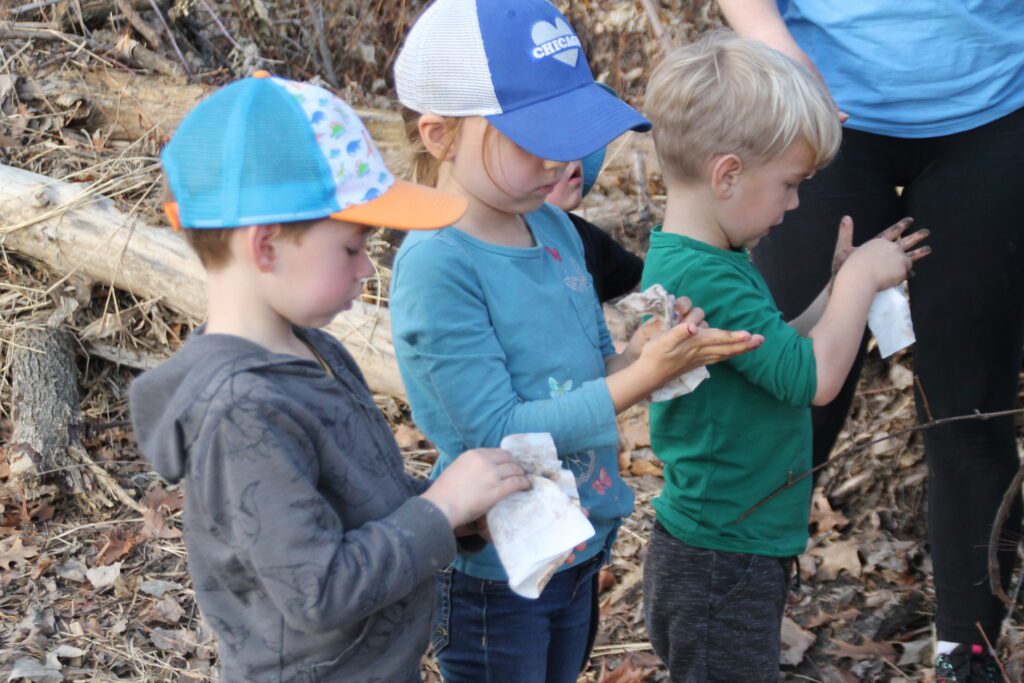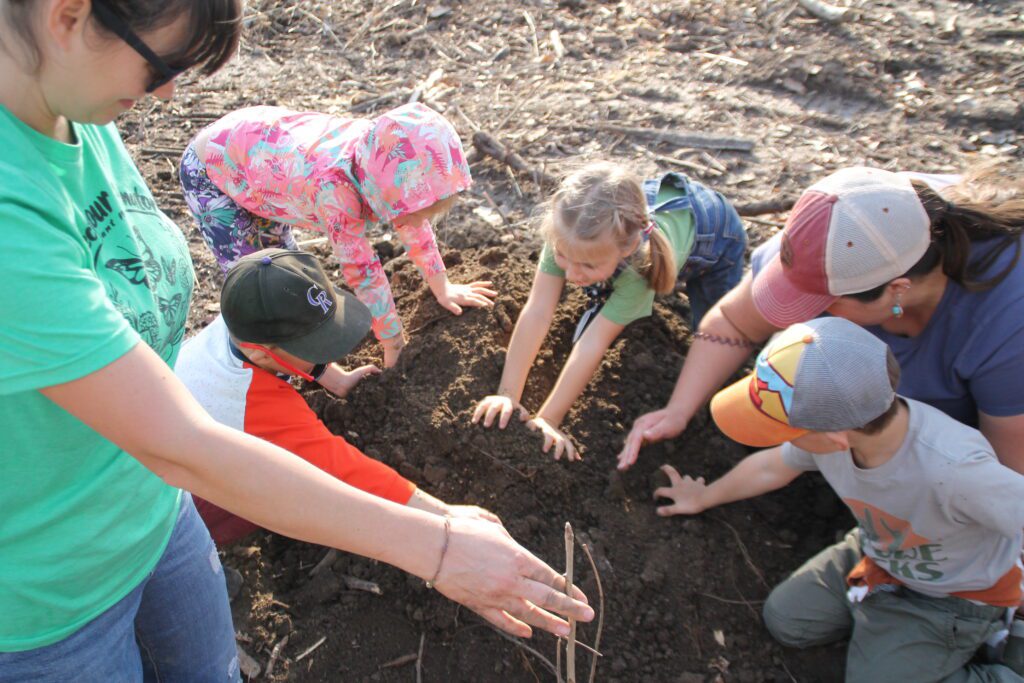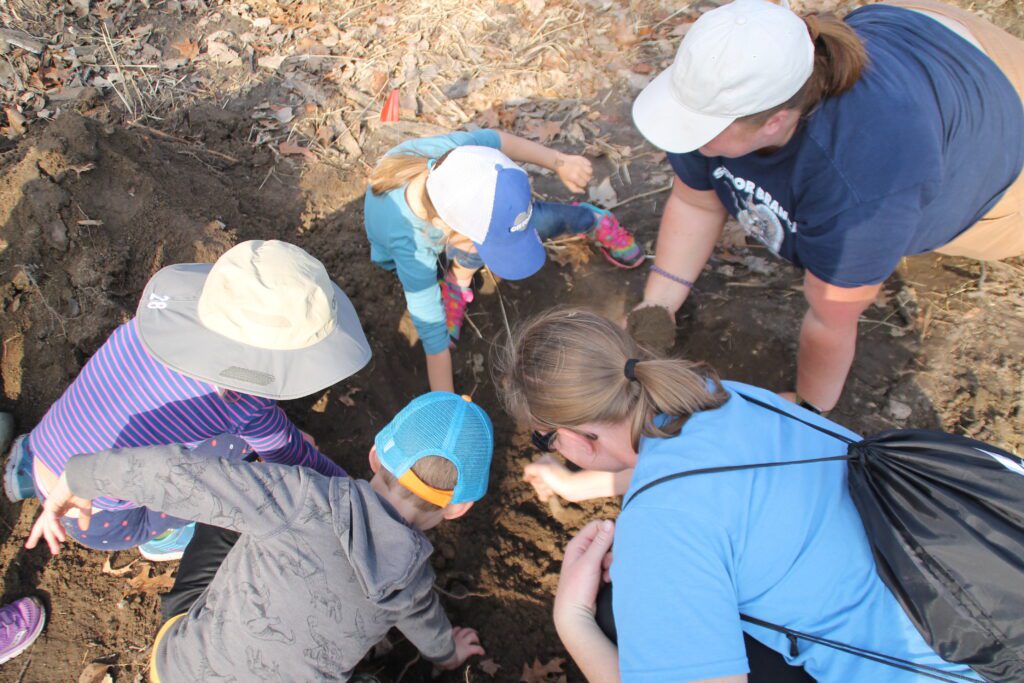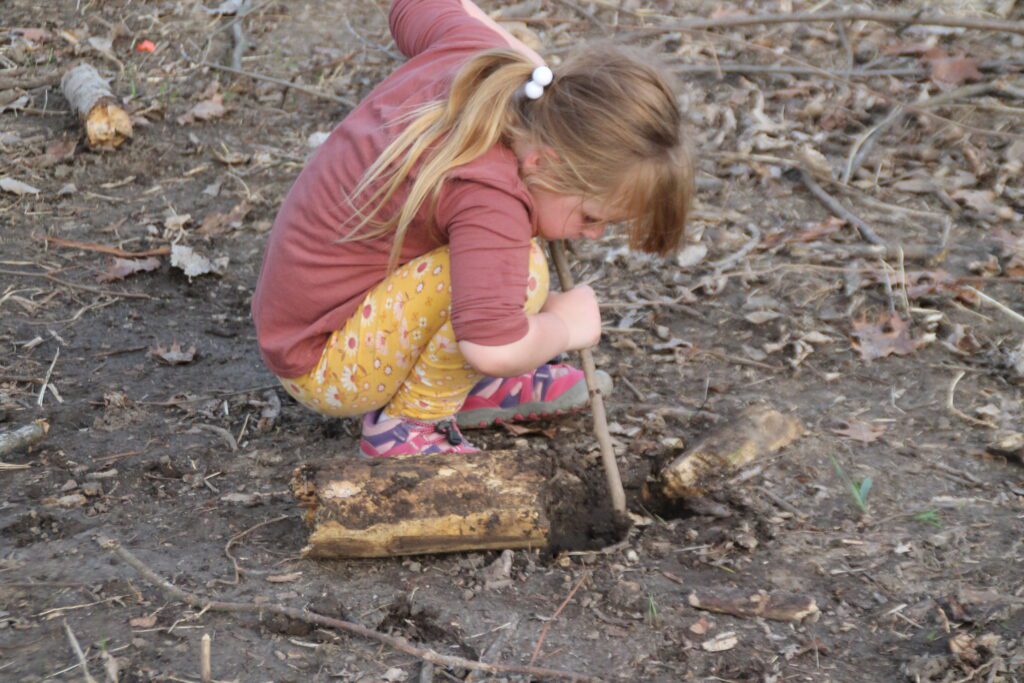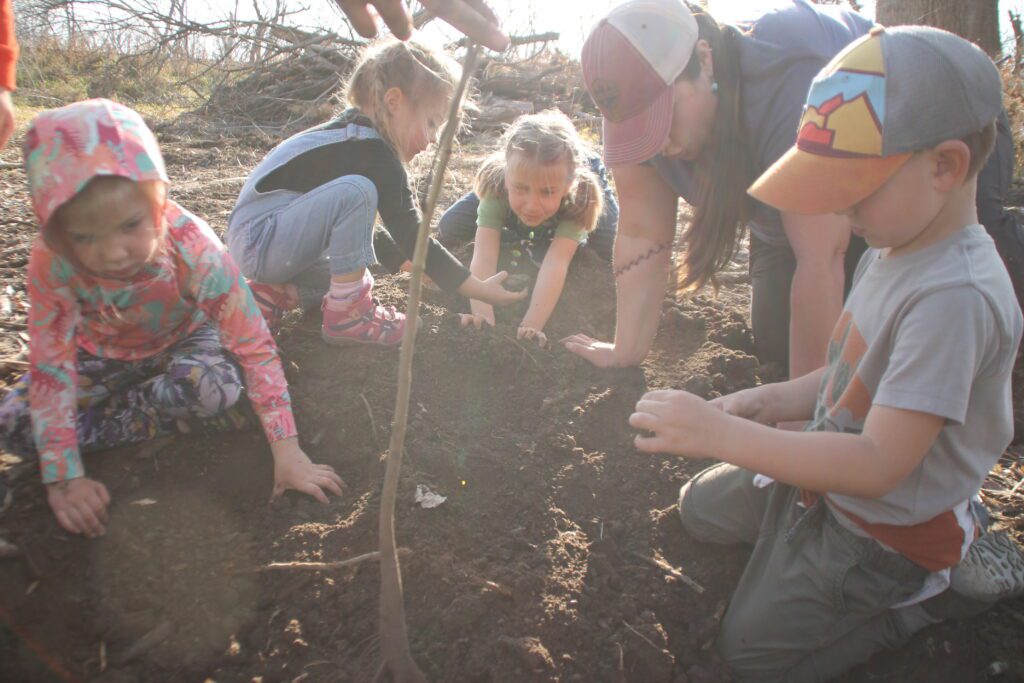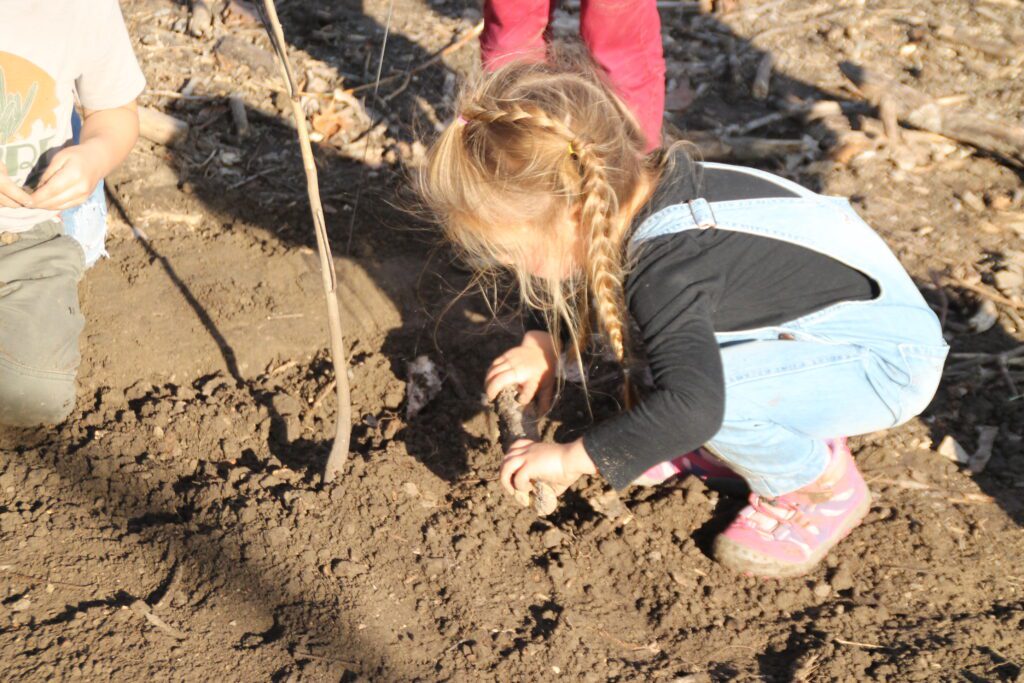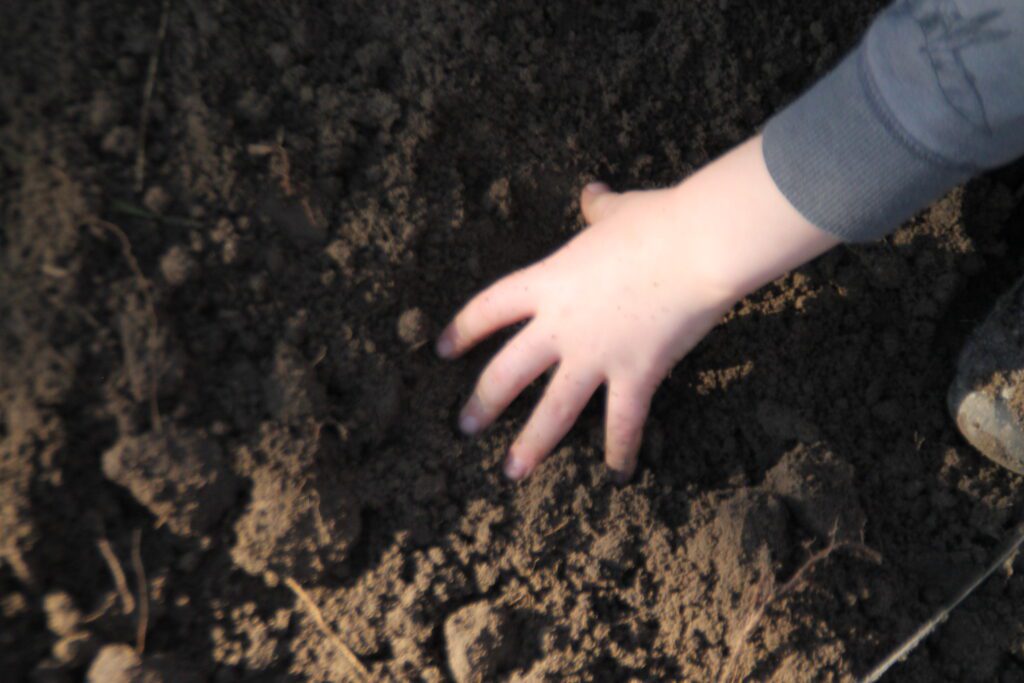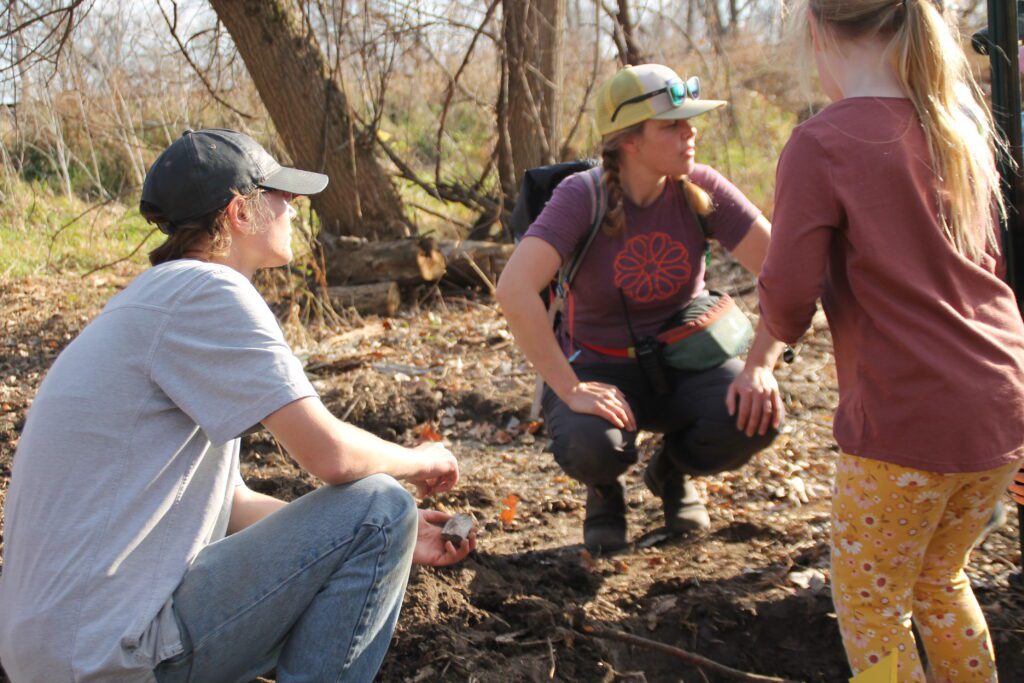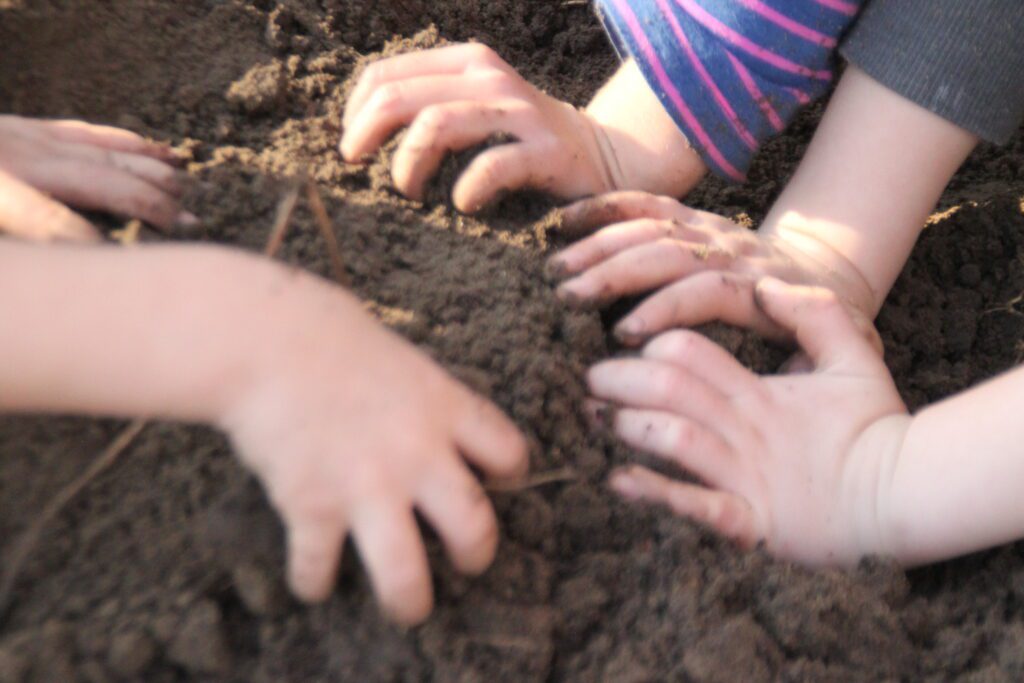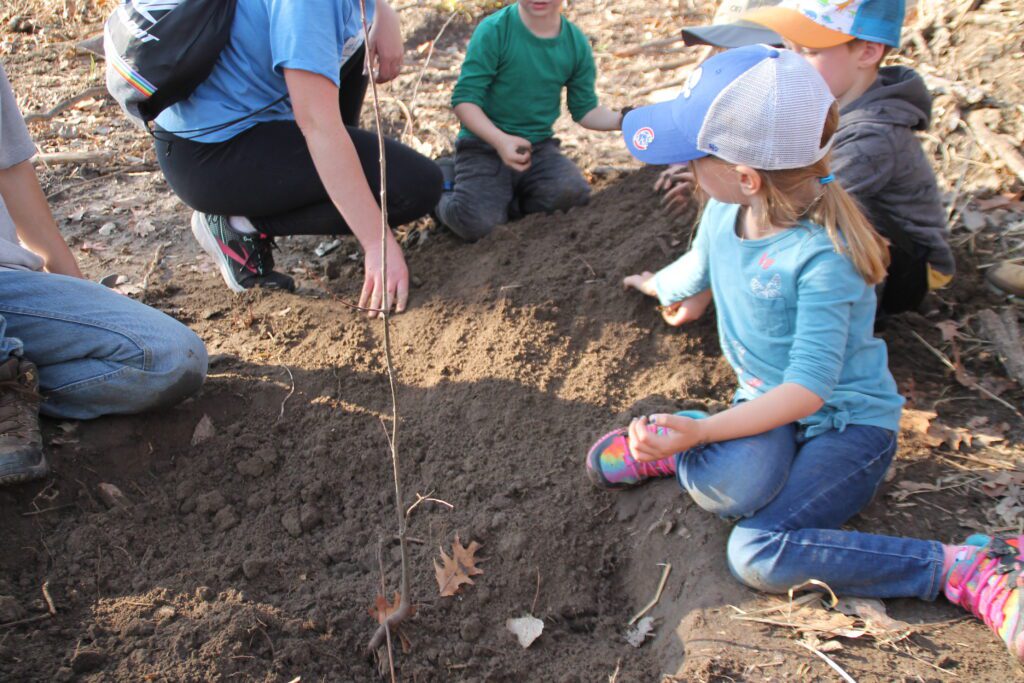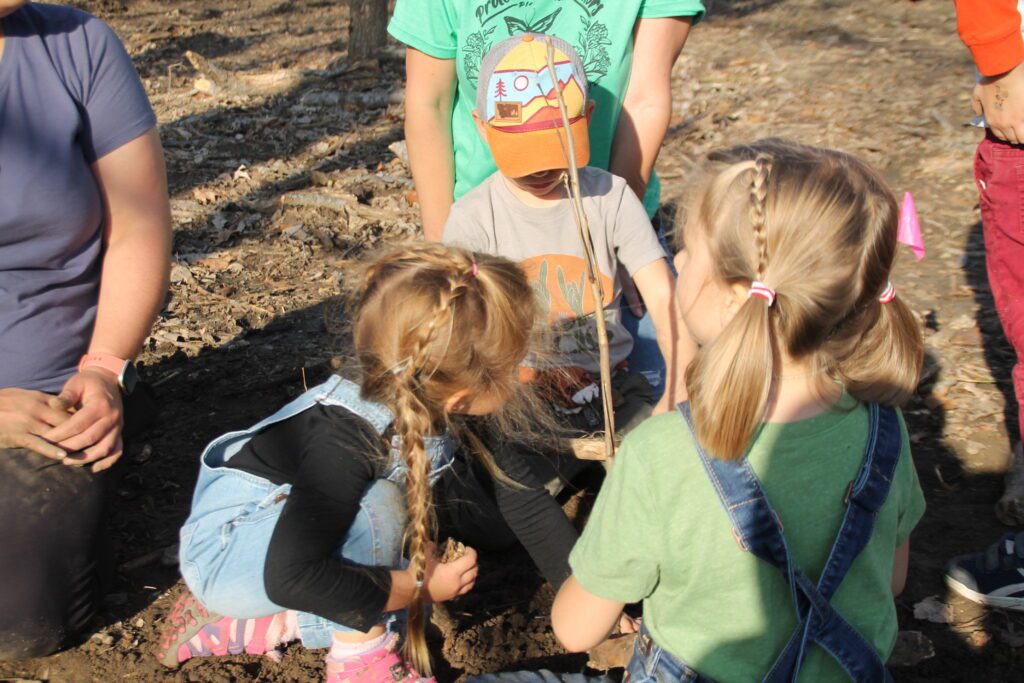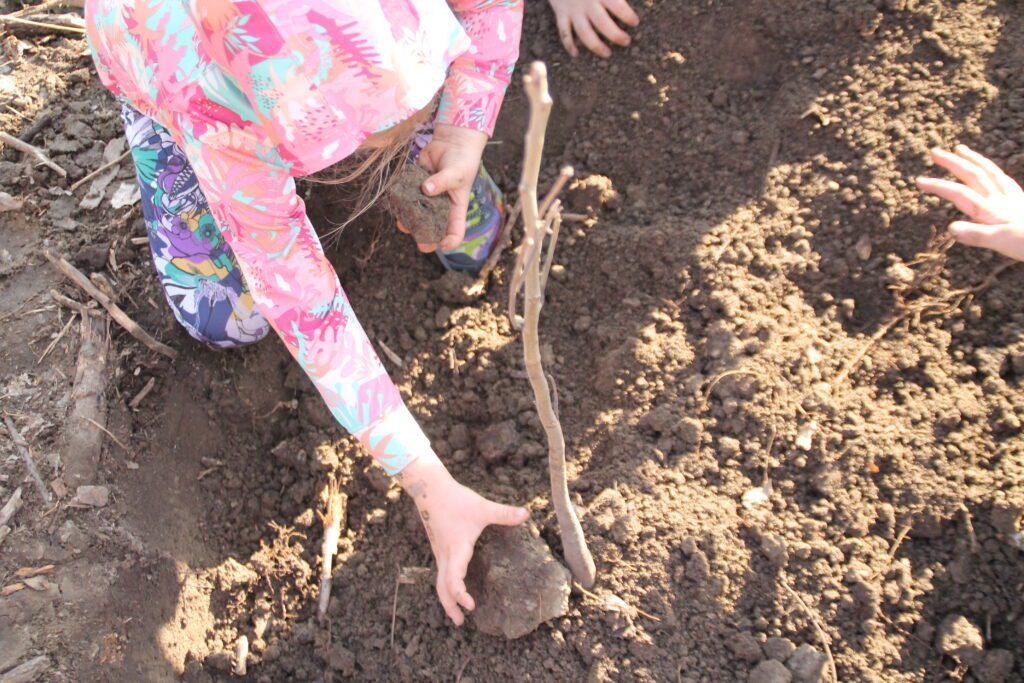Tree plantings at the Nature Center are few and far between. Why? Since our forests are mature we have to cut at least ten mature trees to make room for every new tree. Our prairies are, by their very definition, spaces without trees. That doesn’t leave a lot of places for new trees. This makes this week very special indeed.
With the help of volunteers, including members of the Rotary Club of Linn County, we planted more than 100 trees along Wood Duck Way. The preschoolers from our Creekside Forest School even helped out!
We have been cutting trees along Wood Duck Way to prepare for this event since August 11, 2020. A lot of the trees we have been cutting are cottonwoods and silver maples, shattered by the derecho. Mixed in are a handful of hackberry, mulberry, box elder, elm, ash and black locust, creating a tangled, multistory high mess of twisted and broken limbs. Downed trunks and root-craters posed additional hazards.
As we cut and redistributed trunks and tree tops so that we could have a trail through the space again, we made a pleasant discovery. Young trees planted years ago survived the derecho intact and are growing quite nicely. Many now have 4”- 6” diameter trunks.
Approximately every ten years, we had been going into the area, opening up pockets of sunlight to improve both the age diversity and the species composition of the forest. Creating a forest that is diverse in both age and species helps prevent the spread of infections that can decimate a woodland. This diversity also creates habitats for a variety of wildlife who excel alongside certain tree species. Previous plantings included sycamores, swamp white oaks, pecans, river birch, and Kentucky coffee trees. With the extraordinary amount of additional sunlight provided by the derecho and our recent work, these trees are expected to continue thriving.
We are not quite done cutting all of the dangerous and damaged trees throughout the nine acre forest, but we do have enough space and sunlight for new trees to complement the trail.
This week, we planted pecans, shell-bark hickories, pin oaks, swamp white oaks, sycamores, and river birches. All should do well in the moist bottomland, creating a diverse, ecologically rich forest.



